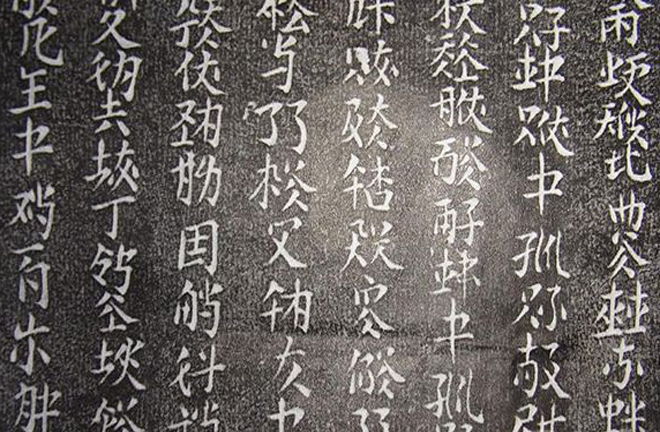Study of Khitan characters needs to be further protected and developed

Due to frequent wars and disputes throughout history, books written with Khitan characters have become increasingly endangered. Photo: LISHIQUWEN
Khitan characters were officially used by the Liao Dynasty (916–1125) in China. Due to frequent wars and disputes, books written with Khitan characters have become increasingly endangered. The Liao Dynasty, established by the Khitan ethnic group, successively created two types of characters, namely the Khitan large script and the Khitan small script. The Jin Dynasty (1115–1234) abolished Khitan characters, and by the end of the dynasty they had disappeared from the world and were not generally known among people. Restoration of the Khitan script has been included as a part of the policy supporting “lost knowledge” launched by the Chinese Academy of Social Sciences (CASS).
Studying the Khitan script has important academic significance for the study of the history of the Liao and Jin dynasties. Kang Peng, an associate research fellow at the Institute of Ancient History under CASS, is interested in how Khitan script data can be used to interpret some major historical issues of that time. Kang and other scholars have jointly established a database that contains more than 10,000 Khitan small characters. He said that current research is focused on sorting and studying the Khitan characters. At the same time, there is also an aim to study the Liao’s descendants and political history through the Khitan characters data.
To protect lost knowledge, the key is to cultivate relevant expertise. Zhang Shaoshan, an associate professor at the College of History and Culture at Chifeng University, said that at present, Chifeng University has opened the “Scripts and Inscriptions of Northern Ancient Ethnic Groups” course for students majoring in cultural relics or museums. This course includes the study of Khitan scripts and inscriptions to stimulate students’ interest in learning Khitan characters.
In 2014, Liu Fengzhu, a research fellow at the Institute of Ethnology and Anthropology at CASS, edited and published The Collection of Khitan Scripts Study Results. This series included the Khitan character data and important research papers that have been published so far, and it is the latest result of research with a focus on the Khitan scripts. The Khitan Small Characters Index, edited by Liu Pujiang and Kang Peng and published in 2014, is a reference book that collates the existing studies on Khitan small characters.
Compared with the Tangut and the Jurchen scripts of the same period, the Khitan script does not provide relevant clues for study. It can only be studied with the help of its related languages such as Mongol and Daur. Kang added that nowadays, there is still not much progress in the interpretation of the Khitan small characters. For those Khitan small character epitaphs that have been studied, it is difficult to interpret new characters. Furthermore, the interpretation of the Khitan large characters is far more difficult than that of the Khitan small characters. Discovering new research methods to better understand Khitan scripts is a difficult task for every Khitan text researcher.
In the past 20 years, we have made great progress both in the accumulation of data and the research results of the Khitan scripts. However, for both large and small Khitan characters, successful interpretations have been few and far between. This has left a vast space for younger generations to study, Liu added.
With each point of progress in the study of the Khitan script there is great significance not only to the script itself, but also to the research of its related disciplines. Fu Lin, a lecturer at the College of Literature of Hebei University, said that language is one of the main carriers of culture. Only by restoring the information of the Khitan scripts can we reproduce the core content of Liao’s culture and thus enrich the connotations of Chinese traditional culture. Future Khitan script research should make full use of scientific and technological means such as a comprehensive database and mathematical modeling for further development.
Due to the high amount of Khitan script counterfeits in recent years, scholars have been forced to authenticate the Khitan character materials, disrupting original academic research. Liu said that in the study of the Khitan script, special attention should be paid to the identification of counterfeits. Only when the fake epitaphs are excluded can the research work be put on the right track. At the same time, we must pay more attention to cultivating talented students of the Khitan script.
edited by SU XUAN
